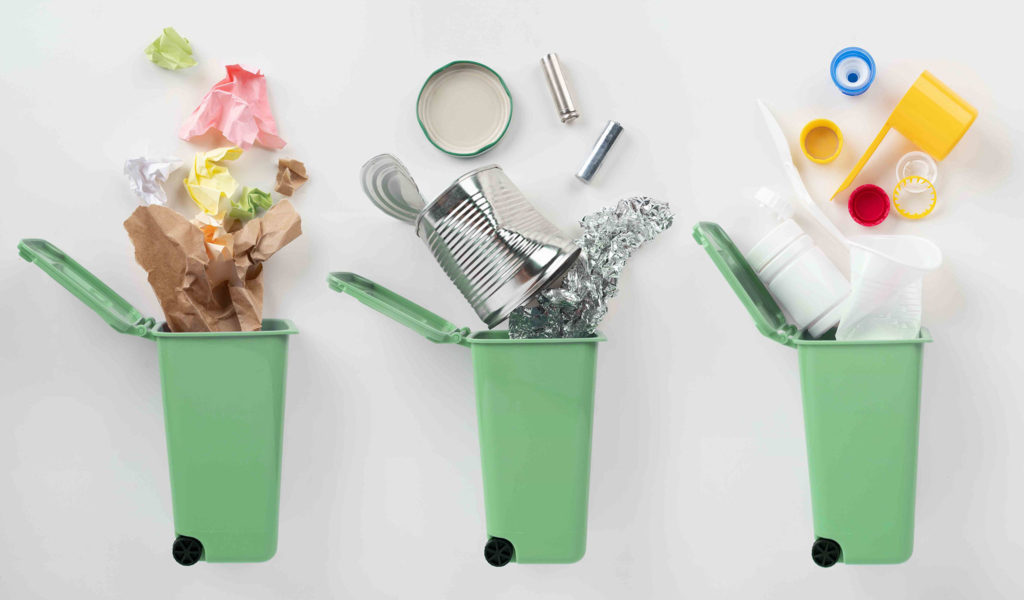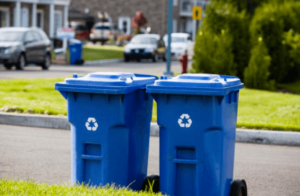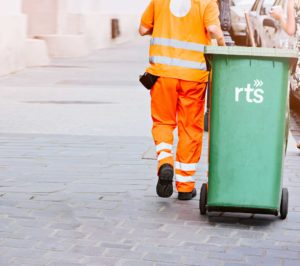Today, the recycling industry is big business and as municipalities across the US strive to keep waste out of landfill, city- and statewide recycling seems like the right approach to our growing trash. Yet for a business or organization considering the costs of waste management, recycling is another expense that gets added into operational overhead, a cost that is growing in comparison to conventional trash disposal.
This brings up the question of how cost-effective recycling is, and while it’s often pointed out that a well-run or properly managed recycling program can be cheaper than other forms of waste disposal, many municipalities have historically come to the conclusion that recycling is more expensive and barely worth it.
While figuring out whether recycling is cost-effective from a business standpoint may be a simple calculation that depends on how much it costs in your area compared to trash disposal, looking at the bigger picture is more difficult. The recycling industry is complex and multifaceted, with a range of factors that dictate the cost-effectiveness of recycling any material.
Currently, in the United States especially, recycling is more expensive than simply throwing materials away. The reasons for this are complex and rooted in the global market for scrap materials, the price of oil, and our continued reliance on cheap, single-use products. So, is recycling really worth it, and does it truly help with our trash problem?
Why is recycling expensive?
For many years, recycling was relatively cheap. North American and European countries were sending millions of tons of recyclables to China, where they were bought at a price that helped offset the cost of local recycling schemes in exporter countries.
Yet in 2018, tired of importing low-quality and contaminated materials, China stopped buying recyclables from overseas. The National Sword Policy, as it’s known, caused the price of scrap materials to plummet as exporting nations were left with waste that they could not process themselves, having relied on China instead of investing in domestic recycling facilities.
Recycling programs are also sometimes hindered by the systems they use. Multi-stream recycling, where materials are separated before collection, requires more effort from the consumer but is easier to sort and generally cheaper. Yet many cities use single-stream recycling, where all materials are placed in the same bin for collection. This is convenient for consumers yet often results in contamination, and materials must be sorted by both machine and human hand, making it more expensive.
These factors have resulted in not only increased recycling costs but also lower recycling rates, as many localities have resorted to incineration or landfill for scrap materials that are less valuable or that simply cannot be processed.
Recycling plastic is not cost-effective… for now
For plastic recycling, in particular, the global restructuring of the scrap market has been a disaster. The low value of scrap and high costs of recycling, coupled with low oil prices, means that recycling plastic now costs more than manufacturing virgin plastic. Plastic is also inherently problematic within the recycling industry, and even highly-recyclable #1 (PETE) or #2 (HDPE) plastics will degrade in quality over time, with processing limits of just two to three cycles before they are no longer usable.
There is however growing demand for recycled plastic, as manufacturers of consumer products shift away from virgin materials as part of their sustainability efforts. This new outlet for waste materials has the potential to positively affect the price of scrap, making recycling plastic cost-effective in the future. The bottom line is, even recycled plastic goods will end up in landfill or incinerators at the end of their useable life cycles.
Paper is another material that is problematic. Each time it is recycled, the fibers become shorter and the quality degrades, so it is generally only recyclable six times before it can no longer be used in paper products. These short fibers are often turned into egg cartons or toilet paper, which then leave the recycling loop and become waste. While manufacturing paper products from virgin paper can be easier and cheaper than using recycled, recycling paper is cost-effective in that it uses significantly less energy.
Metal and glass are absolutely worth recycling
There are other materials where recycling is cost-effective. Aluminum is one of them, as it is indefinitely recyclable with no loss of quality. It takes around 95% less energy to produce recycled aluminum than it does to produce the material new. Aluminum is one of the most highly-recycled materials in the world, and there is a very large and growing market for it.
Steel is also 100% recyclable, and low-quality scrap can even be processed in a way that produces high-quality steel. The sorting and recycling process is simple and up to 74% more energy-efficient than producing virgin steel. The demand for recycled steel far exceeds supply, making it a highly valuable material that is very cost-effective to recycle.
Additionally, glass is infinitely recyclable with no loss of quality and easier to do than creating glass new, although the energy savings are not as high as with metals. While glass is highly recycled in Europe, the US recycling system overall is not set up to efficiently recycle the material, and the national glass recycling average remains low around 33% despite interest in manufacturers for using recycled glass.
Overall, global demand in high-quality recyclable materials is actually growing. This means that, as new technology and infrastructure is developed, the price of recycling will likely go down and it will become more cost-effective to recycle paper, plastic, and other materials in the future.
Is recycling worth it? Looking deeper
The question of cost-effectiveness can also be reframed: Is recycling worth the cost when we consider other factors aside from money? From several different standpoints, the resounding answer is yes.
When considering worth, it’s important to remember that financial profit is only one part of the “triple bottom line”, next to people and planet. Recycling has many measurable and immeasurable benefits for these latter two and is an essential tool in improving environmental and social responsibility.
For instance, one often-overlooked benefit of recycling is that it creates jobs and helps the economy. The US Environmental Protection Agency reported that recycling accounted for around $37.8 billion in wages and $5.5 billion in tax revenues even in 2012, while a 2021 study by international environmental alliance GAIA found that recycling creates 70 times more jobs than landfill and incineration. Recycling then has a very real positive effect on people’s livelihoods compared to conventional waste disposal.
Yet where recycling has the greatest impact on both people and the planet is, of course, in its environmental benefits. Recycling any type of material is simply better than sending it to landfill or incineration where it releases greenhouse gases and other pollutants. Recycling materials also significantly reduces demand for natural resources, our reliance on fossil fuels, and the impacts associated with extracting both.
While recycling may not always be cost-effective from an immediate financial standpoint, it does have clear benefits that translate into worth in other ways. Yet it is not the solution to all of our waste problems, and it ranks below reduce and reuse in the waste hierarchy for a reason—many materials have a limited lifespan, and recycling still uses large amounts of resources like energy and water. From a sustainability perspective, redesigning, reducing, and reusing are significantly more important and effective in reducing environmental impact.
In short, when considering how to manage waste, the best thing you can do is produce as little of it as possible to begin with. This has the bonus of being both environmentally responsible and cost-effective. Yet for the waste that does get produced, recycling is indeed worth it in the long run, even if it costs slightly more than disposing of waste in the trash.
For more information on the recycling industry, how municipalities are approaching the issue, and what the future of waste management looks like, subscribe to the RTS blog today. Additionally, to discuss how your business can improve recycling and diversion rates through on-demand and recurring collections combined with insightful waste diversion data, contact one of our TRUE advisors today.






